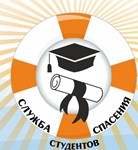Test Man
Content: 40205103725887.docx (12.72 KB)
Uploaded: 05.02.2014
Positive responses: 0
Negative responses: 0
Sold: 0
Refunds: 0
Seller: ИФЦ Студия
information about the seller and its items
Loyalty discount! If the total amount of your purchases from the seller more than:
| $25 | the discount is | 10% |
| $50 | the discount is | 20% |
$0.97
16. Man - the unity of biological and social essence
1b.1. Neanderthal man is a subspecies of man:
A) Skilful; B) reasonable;
B) upright; D) modern.
16.2. The modern monkey, closest to a person in terms of kinship, is:
A) Orangutan; B) the gorilla;
B) the chimpanzee; D) baboon.
16.3. Identify the correct sequence of people´s ancestors:
A) upright - smart - reasonable;
B) reasonable - skilful - upright;
D) skillful - reasonable - upright;
D) skillful - upright - reasonable.
16.4. The ape-like ancestor of modern man who lived in the savannas of East Africa 4-3 million years ago is:
A) driopithec proconsul;
B) African Australopithecus;
B) ramapithec; D) Sinanthropus.
16.5. The human circulatory system consists of:
A) of the heart and a large circle of blood circulation (from the left ventricle to the right atrium);
B) heart and small circle of blood circulation (from the right ventricle to the left atrium);
B) the heart and closed system of blood vessels, including arteries, veins and capillaries;
D) from the large and small circle of blood circulation.
16.6. The number of chromosomes in humans:
A) 36; B) 38; B) 46; D) 48.
16.7. The human genome is:
A) nucleotide sequence of individual gene sites;
B) the aggregate of all genes and intergenic regions of DNA;
B) polymer chain of specific DNA;
D) DNA.
16.8. The central body of immunity is:
A) pituitary gland (leading gland of internal secretion);
B) thymus (thymus gland);
B) epiphysis (brain structure);
D) thyroid gland.
16.9. The unique value of the phenomenon of man (according to Teilhard de Chardin and VI Vernadsky) is manifested:
A) that man becomes the main geo-factor of the further evolution of nature;
B) that man is a leap in the evolution of earthly life;
B) in the unity of the material body (biomachine) and the infinite field of consciousness (that is, in the corpuscular-wave nature of man);
D) in the unity of functioning in human life, the laws of nature and society.
16.10. The phenotype does not include:
A) behavioral characteristics;
B) mental warehouse;
B) Physiology;
D) chromosome set.
1b.1. Neanderthal man is a subspecies of man:
A) Skilful; B) reasonable;
B) upright; D) modern.
16.2. The modern monkey, closest to a person in terms of kinship, is:
A) Orangutan; B) the gorilla;
B) the chimpanzee; D) baboon.
16.3. Identify the correct sequence of people´s ancestors:
A) upright - smart - reasonable;
B) reasonable - skilful - upright;
D) skillful - reasonable - upright;
D) skillful - upright - reasonable.
16.4. The ape-like ancestor of modern man who lived in the savannas of East Africa 4-3 million years ago is:
A) driopithec proconsul;
B) African Australopithecus;
B) ramapithec; D) Sinanthropus.
16.5. The human circulatory system consists of:
A) of the heart and a large circle of blood circulation (from the left ventricle to the right atrium);
B) heart and small circle of blood circulation (from the right ventricle to the left atrium);
B) the heart and closed system of blood vessels, including arteries, veins and capillaries;
D) from the large and small circle of blood circulation.
16.6. The number of chromosomes in humans:
A) 36; B) 38; B) 46; D) 48.
16.7. The human genome is:
A) nucleotide sequence of individual gene sites;
B) the aggregate of all genes and intergenic regions of DNA;
B) polymer chain of specific DNA;
D) DNA.
16.8. The central body of immunity is:
A) pituitary gland (leading gland of internal secretion);
B) thymus (thymus gland);
B) epiphysis (brain structure);
D) thyroid gland.
16.9. The unique value of the phenomenon of man (according to Teilhard de Chardin and VI Vernadsky) is manifested:
A) that man becomes the main geo-factor of the further evolution of nature;
B) that man is a leap in the evolution of earthly life;
B) in the unity of the material body (biomachine) and the infinite field of consciousness (that is, in the corpuscular-wave nature of man);
D) in the unity of functioning in human life, the laws of nature and society.
16.10. The phenotype does not include:
A) behavioral characteristics;
B) mental warehouse;
B) Physiology;
D) chromosome set.
#TestsNestquestion
No feedback yet
